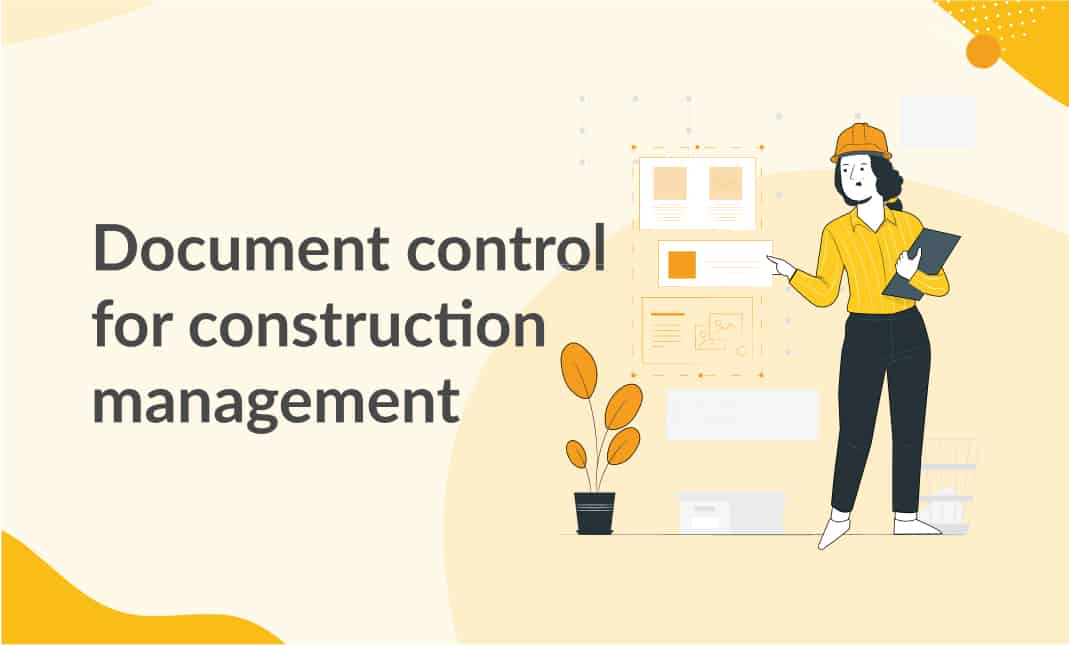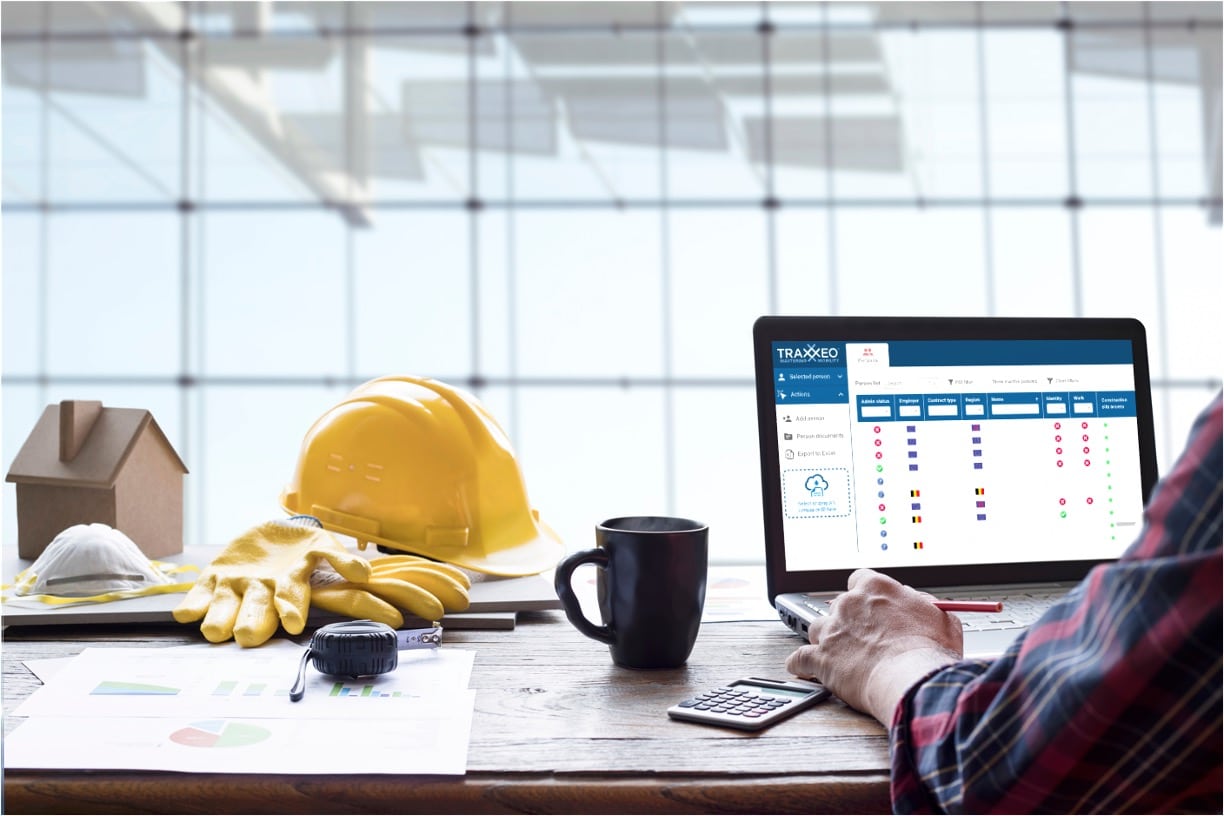Grasping Company: Improve Effectiveness with Construction Document Management
Grasping Company: Improve Effectiveness with Construction Document Management
Blog Article
Optimizing Project Partnership: Engineer's Ideal Practices in Building Paper Administration
In the detailed world of building jobs, the effective monitoring of building and construction documents stands as a keystone for success. Engineers, with their meticulous attention to detail and ingenious layout services, are entrusted with orchestrating a harmony of stakeholders, timelines, and resources. However, amidst this intricacy lies a critical inquiry: exactly how can designers streamline partnership procedures to enhance job end results? By checking out vital strategies such as leveraging cloud-based platforms, establishing durable interaction methods, and guaranteeing data protection, architects can elevate their file administration techniques to new heights.
Leveraging Cloud-Based Platforms
By transitioning from typical paper-based systems to shadow services, engineers can simplify cooperation, enhance file accessibility, and enhance total task effectiveness. This ease of access promotes smooth interaction and coordination amongst job stakeholders, leading to fewer mistakes and delays in the building and construction procedure.
Furthermore, cloud-based platforms supply a safe environment for saving sensitive job details, providing security, regular backups, and customer consent setups to safeguard information stability. Designers can also gain from the scalability of cloud solutions, permitting them to readjust storage capacity and performance based upon project demands. On the whole, leveraging cloud-based platforms empowers designers to maximize their construction file administration procedures, driving better collaboration, efficiency, and success in their jobs.
Applying Version Control Systems
Having established the benefits of cloud-based systems in building and construction record management, architects can now improve their record control procedures by implementing Version Control Solution. Variation Control Equipment (VCS) are important tools that track modifications in papers, making certain that employee are constantly dealing with the most recent and most accurate information. By carrying out VCS, engineers can keep a central repository where all project documents are stored, enabling seamless collaboration while reducing the risk of errors and variation problems.
One trick benefit of Variation Control Solution is the capability to track the complete history of record adjustments, permitting customers to return to previous variations if needed (construction document management). This feature is particularly valuable in building and construction tasks where layout versions and modifications are common. Moreover, VCS facilitates far better interaction among staff member by giving a clear audit route of that made particular changes and when they were made. This transparency not just enhances liability however likewise helps in fixing conflicts or discrepancies that might develop during the project lifecycle.
Developing Communication Procedures
To make certain efficient and reliable project control, architects have to establish clear and durable communication procedures within their building and construction document administration procedures. Interaction protocols define the techniques, regularity, and networks where staff member exchange info, updates, and responses. One vital facet of developing these methods is determining a centralized communication system where all project-related conversations and record sharing can happen. This platform might be a task management software, email strings, or cloud-based storage space remedies. By establishing guidelines on exactly how details is disseminated and how staff member connect with each various other, designers can enhance the circulation of information and avoid miscommunications or hold-ups in the building and construction process.
Moreover, interaction protocols should also include guidelines on exactly how to manage problems, adjustment orders, and immediate concerns that might arise during the project lifecycle. Establishing a structured approach to communication ensures that all stakeholders are on the very same web page, promotes transparency, and ultimately adds to the successful conclusion of the building and construction job.
Using BIM Software Application for Coordination
BIM software plays a pivotal duty in improving coordination among task team participants in the building and construction market. Building Details Modeling (BIM) promotes partnership by offering a central platform where architects, designers, specialists, and other stakeholders can collaborate in a worked with way. Via BIM software application, job participants can access and update a common model which contains comprehensive details about the building layout, construction elements, and project timetables.

Furthermore, BIM software makes it possible for real-time cooperation and interaction among team members, regardless of their physical location. Through cloud-based BIM platforms, project stakeholders can access the most recent task info, track modifications, and make notified decisions without delay. On the whole, leveraging BIM software for control improves task effectiveness, performance, and eventually leads to effective project results.
Ensuring Information Safety and Compliance
In the world of building document monitoring, protecting information stability and ensuring regulative compliance are critical factors to consider for designers and various other project stakeholders. Designers have to execute durable security steps to secure sensitive job details from unauthorized gain access to or violations. Making use of protected cloud storage space solutions with file encryption procedures and accessibility controls can help alleviate risks connected with information burglary or loss. Frequently upgrading software and systems, carrying out safety audits, and providing personnel find this training on information protection best methods are necessary actions in maintaining a safe setting for construction file monitoring.

Verdict
In final thought, engineers can optimize job collaboration in building record management by leveraging cloud-based systems, implementing variation control systems, developing communication procedures, making use of BIM software for sychronisation, and making certain data safety and conformity. These finest methods aid improve the building and construction procedure, boost communication amongst task stakeholders, and enhance performance in project shipment. By adhering to these standards, architects can efficiently handle building and construction documents and help with successful job outcomes.
With BIM software application, job individuals can access and upgrade a common version that contains comprehensive info regarding the structure design, building parts, and task timetables.
Via cloud-based BIM systems, task stakeholders can access the most recent task details, track changes, and make informed choices without delay - construction document management. On the whole, leveraging BIM software for coordination enhances project efficiency, performance, and inevitably leads to effective task end results
In conclusion, architects can optimize project cooperation in building and construction record monitoring by leveraging cloud-based systems, carrying out version control systems, establishing communication procedures, using BIM software application for coordination, and ensuring information protection and compliance. These best practices aid enhance the building procedure, enhance communication among task stakeholders, and improve efficiency in project distribution.
Report this page